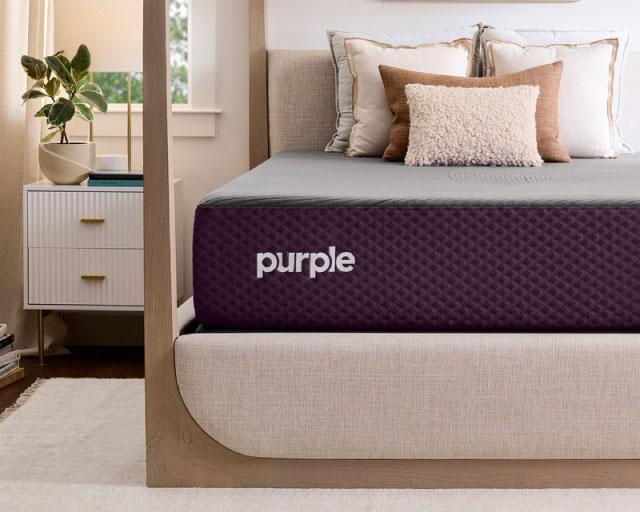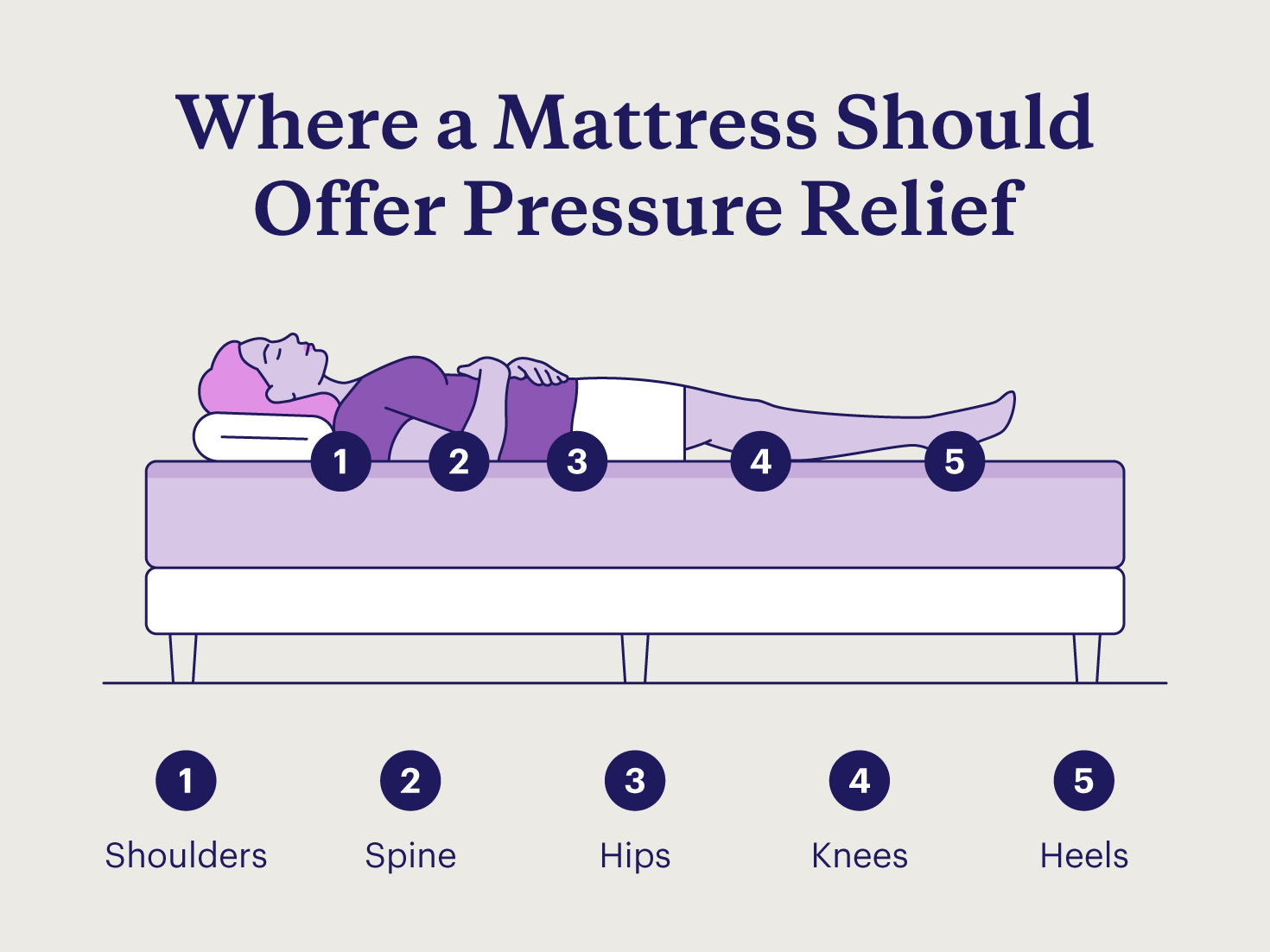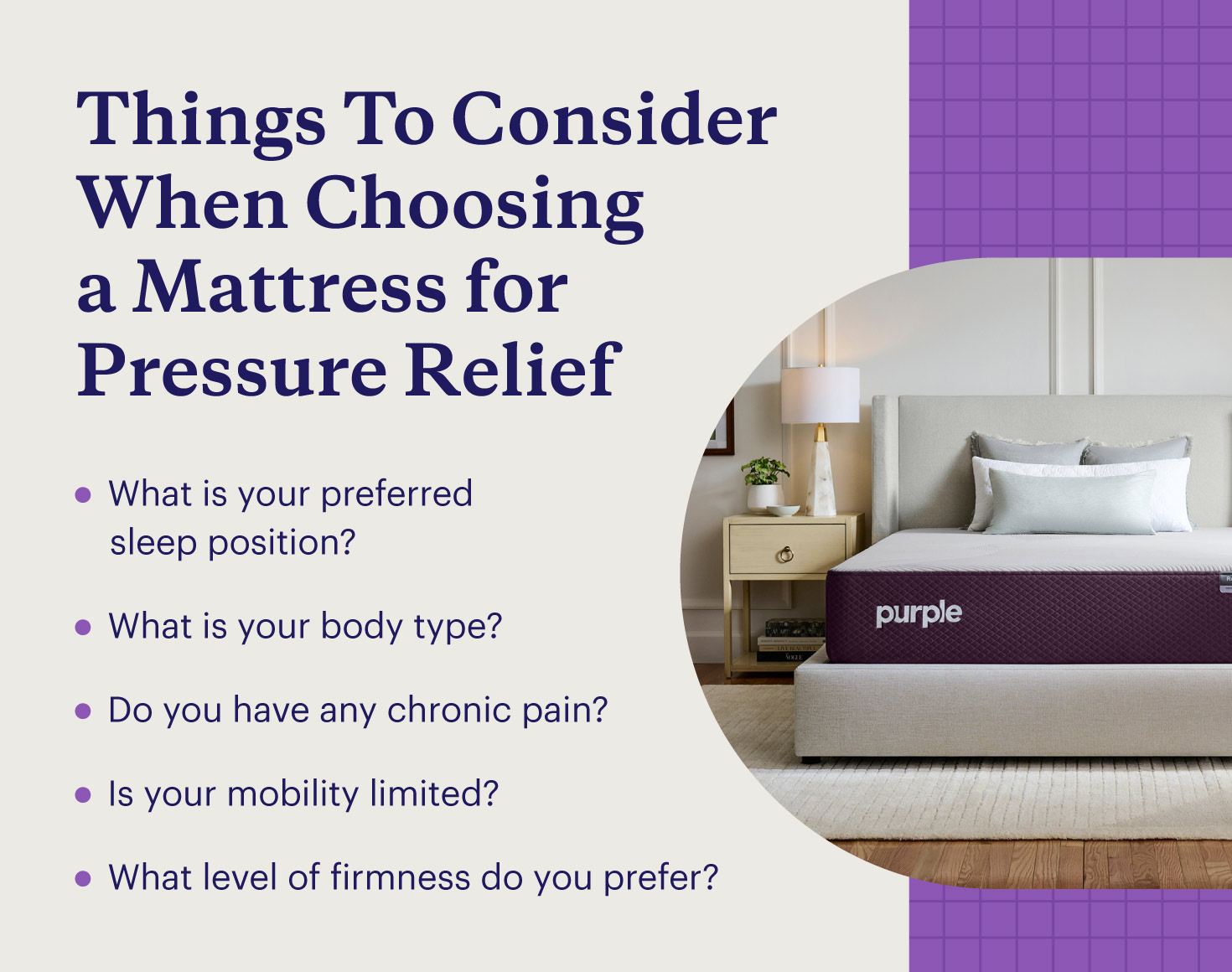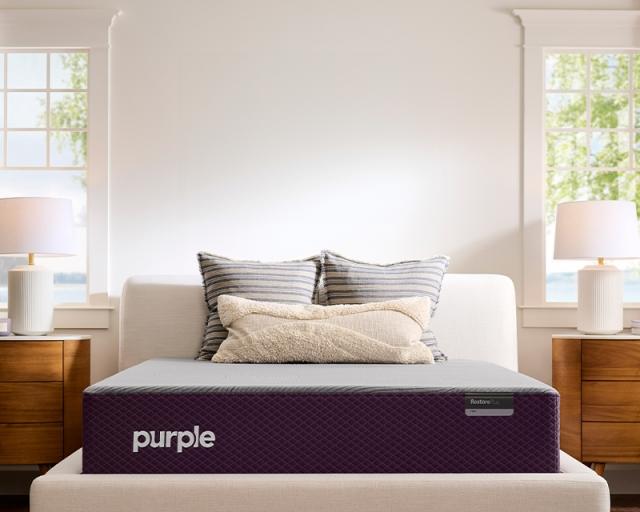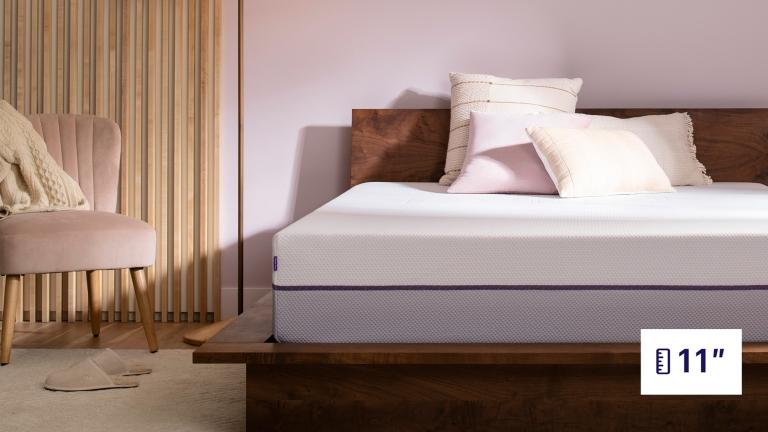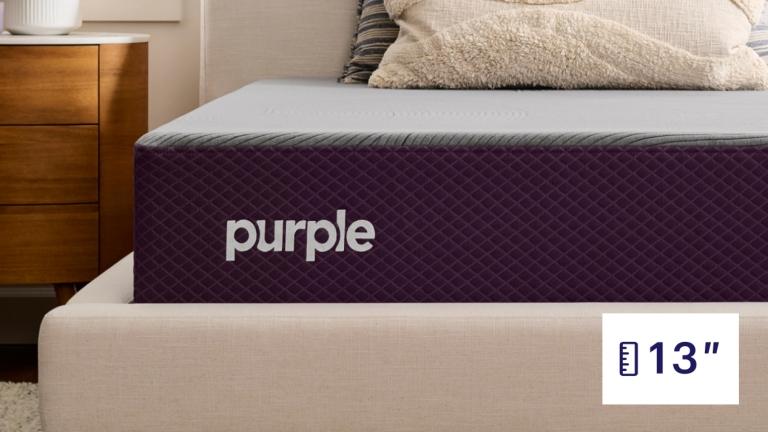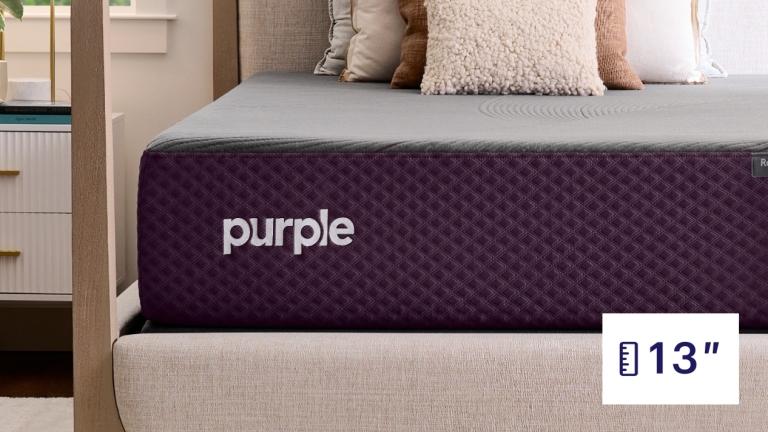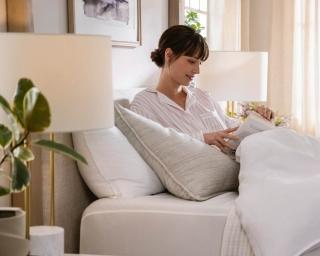What Is Pressure Relief + Why Does It Matter in a Mattress?
What type of mattress is best for pressure relief?
- The best mattresses for pressure relief are made with memory foam, latex, hybrids, and the GelFlex® Grid.
- A great pressure-relieving mattress can contour to and cushion pressure points, such as your hips and shoulders, while supporting your back and promoting spinal alignment.
- The best pressure relief mattress for you will depend on your sleep position, body type, and mobility.
Painful or uncomfortable pressure can impact sleep quality and, therefore, how rested you feel the next morning. If you wake up with soreness or just can’t get comfortable in bed, the main culprit might be pressure relief — or lack thereof. When referring to a mattress, pressure relief has to do with how well the mattress cradles and cushions contact points like the hips and shoulders while providing enough support for your spine.
Mattresses that are engineered to relieve pressure do so by reducing and alleviating the buildup of pressure on specific, common points on the body.
Dive deeper into what “pressure relief” actually means, why pressure points matter for preventing and reducing aches, and which mattresses do the best job of relieving pressure on your body.
What Is Pressure Relief in a Mattress?
If a mattress offers “pressure relief,” this means it cradles and cushions the common points of pressure buildup (such as your hips and shoulders), while maintaining integrity and therefore support everywhere else. Cradling pressure points helps to prevent an uncomfortable buildup of tension in those key areas.
Your hips and shoulders are the most commonly referenced “pressure points.” Mattresses are made with varying degrees of pressure relief, meaning some may be too firm (not enough sinkage) or too soft (too much sinkage) for your body type.
It’s important to remember that other parts of the body need support at the same time your pressure points need relief. One such example is your spine that requires proper alignment without any awkward twists to prevent back pain and stiffness. This is where mattress firmness comes in.
Some mattresses have “zoning,” which means that some areas are more or less firm than others. This helps keep your spine aligned during the night, preventing back pain.
Mattresses like the Purple Restore® Hybrid Mattress offer responsive pressure relief, instantly adapting to your sleep position to cradle your pressure points without pause throughout the night.
Why Does Pressure Relief Matter?
Without pressure relief, you may be more likely to wake up with sore spots. You also may find it harder to fall asleep at all, which can negatively impact your mental and physical health.
A bad mattress can cause hip pain, shoulder pain, back pain, and general discomfort. That’s why finding the best mattress for pressure relief should be at the top of your list when you’re in the market for a new mattress.
Who should care the most about pressure relief? While it benefits everyone, here’s a list of those who should take special care to prioritize pressure relief:
- Individuals with chronic pain: For those with chronic pain, waking up each morning after sleeping on an old or low-quality mattress that promotes pressure build up on your pressure points can be aggravating. Pressure relief mattresses can be the solution.
- Older individuals: Elderly people with back and hip pain, joint pain, arthritis, or other conditions that create discomfort or poor circulation during the night require adequate pressure relief.
- Athletes: Athletes train hard during the day, putting lots of stress on their muscles and joints. A pressure relief mattress will support the critical recovery their bodies need at night, reducing soreness and allowing for better sleep quality.
- Side sleepers: Side sleepers experience the most pressure on their shoulders and hips, which can lead to soreness in those areas without proper pressure relief.
- Back sleepers: Back sleepers have less pressure on their shoulders, but they need back support that also cushions their hips.
- Stomach sleepers: Stomach sleepers experience enhanced pressure on their necks and lower backs, which can lead to spinal misalignment. Proper pressure relief mattresses can help mitigate resulting pain.
- Lightweight sleepers: Lightweight people may need softer mattresses for sufficient pressure relief. With less body weight, they may not sink into a firm mattress enough to create even pressure distribution.
Types of Pressure Relieving Mattresses
With so many types of mattresses on the market, it can be difficult to tell which ones are best for pressure relief. Pressure relief is highly dependant on the design and materials that go into a mattress.
Here’s an overview of different mattresses and the amount of pressure relief they each provide:
Type of Mattress | Amount of Pressure Relief |
Innerspring | Low Innerspring mattresses typically don’t provide targeted support or pressure-relieving comfort layers. |
Memory foam | Medium to high Memory foam mattresses are soft and contour to pressure points, but some people may find that they sink in too far and don’t provide enough support for their backs. |
Latex | Medium Latex mattresses are supportive and durable but often lack ultra-soft support zones or adaptive pressure relief. |
Hybrid | Medium to high Hybrid mattresses capture the strong support of spring mattresses with the cushiony comfort of memory foam beds. A coil core supports your spine, and a soft top layer reduces pressure on your body. |
GelFlex® Grid | Maximum The GelFlex® Grid is designed with hundreds of strong yet flexible columns that contour under the concentrated weight of your pressure points while lifting and supporting broad surfaces like your back. |
The Purple RestorePremier® Hybrid Mattress is an industry-leading choice for pressure relief. Its responsive CoolFlex™ Coils conform precisely to your body shape while letting excess body heat escape for maximum cooling.
How To Choose the Best Mattress for Pressure Points
If your pressure points ache while in bed or throughout the day, it’s time to choose a new mattress that offers more pressure relief. While the materials that make up a mattress certainly matter, which mattress will provide the best pressure relief for you will also depend heavily on your sleep position, body type, and mobility.
Based on Sleep Position
Side sleepers need soft to medium-firm mattresses for their hips and shoulders. Mattresses with extra cushioning layers support these body parts that tend to sink into the mattress when sleeping on your side.
Back sleepers have the least weight on their pressure points but most find a medium-firm mattress best for spine alignment and lumbar support.
Stomach sleepers often find that firm mattresses support their pressure points best without letting their midsection sink too far down and hurt their backs.
Based on Body Type
Sleepers with lighter body types may benefit from a soft mattress, which will contour more closely to their pressure points.
Sleepers with heavier body types may find that a firm mattress is more comfortable on their pressure points. This prevents too much sinkage into the mattress while still reducing tension on the hips and shoulders.
Based on Mobility
Sleepers with limited mobility may benefit from mattresses with a high level of pressure relief to help improve circulation during the night. Of course, if you have limited mobility, you should always consult a medical professional to determine what sleep setup best suits you.
Mattress comfort can be extremely subjective. If you strongly prefer the feel of a soft or firm mattress, go for it — just make sure that the mattress offers some degree of pressure relief and spinal support.
When Should You Use a Pressure Relieving Mattress?
Now that you know what a pressure relief mattress is, here are some scenarios when you might consider getting one:
- You wake up with shoulder pain and/or hip pain
- You have chronic pain
- Your mattress is old and sagging
- Your new mattress is giving you back pain
Purple mattresses offer unparalleled pressure relief thanks to the GelFlex® Grid, engineered to be simultaneously soft and supportive so you never have to choose between cradling your pressure points and supporting your back. They are also one of the best mattresses out there for body pain — the Purple Grid has been shown to reduce musculoskeletal pain by 40% in trial participants.
Pressure Relief Mattress FAQ
Pressure relief simply means alleviating weight on body parts that tend to build up excess tension. When referring to mattresses, pressure relief refers to the mattress’s ability to distribute weight evenly while contouring to your body’s unique shape to reduce pressure on key pressure points like your hips and shoulders.
Yes, high-quality pressure-relieving mattresses are designed to reduce pressure buildup on key areas of your body that may otherwise experience uncomfortable tension during the night.
Yes, memory foam molds around your hips and shoulders, reducing pressure buildup.
However, memory foam isn’t necessarily the only, or best, option for pressure relief. The Purple GelFlex® Grid stands out as a more innovative alternative to a memory foam mattresses like Casper because the Purple Grid instantly adapts to movement, aligns your spine, cradles your pressure points, and increases airflow all at once.
Here are some factors that affect mattress pressure point relief:
- Body weight: Lighter sleepers often find that softer mattresses support their pressure points better, while heavier sleepers find more pressure relief from firmer mattresses.
- Mattress type: The Purple GelFlex® Grid, memory foam, latex, and hybrid mattresses are the best mattresses to relieve pressure points.
In general, side sleepers may find that soft to medium-firm mattresses provide the best pressure relief. Likewise, high-loft pillows are the best pillows for side sleepers because they offer added pressure relief by cradling their heads.
More To Explore
Level up your sleep routine with our most-loved products.

